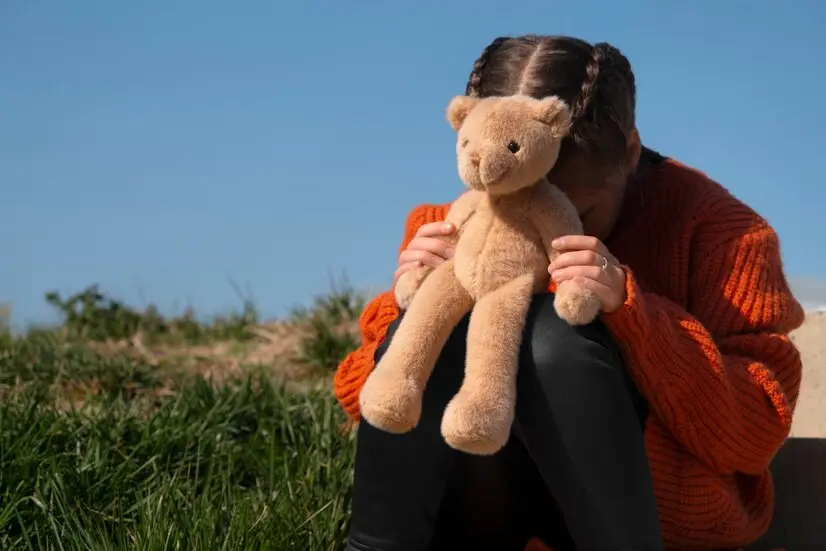For decades, Winnie the Pooh and his friends from the Hundred Acre Wood have delighted readers of all ages. These timeless tales, written by A.A. Milne, explore themes of friendship, kindness, and problem-solving. However, a fascinating theory suggests that each beloved character may represent different mental health conditions. This connection, while not confirmed by Milne, has sparked discussions about mental health and its portrayal in literature. Exploring these characters through this lens offers a unique way to understand mental health—especially for younger audiences.
Mental Health in Literature: An Overview
Literature has long been a mirror for human emotions and struggles. From Shakespeare’s portrayal of grief in Hamlet to modern novels tackling anxiety and depression, mental health has been an integral theme. By embedding psychological elements into stories, authors provide readers with relatable experiences, reducing stigma and opening pathways to empathy. The theory that Winnie the Pooh characters embody mental health conditions is a modern interpretation—a lens through which we can explore how stories educate and comfort us.
Exploring the Hundred Acre Wood Through a Psychological Lens
In 2000, a Canadian Medical Association Journal article titled Pathology in the Hundred Acre Wood: A Neurodevelopmental Perspective on A.A. Milne hypothesized that the characters in Winnie the Pooh could symbolize various mental health disorders. While this interpretation may not align with Milne’s intent, it resonates with readers, encouraging thoughtful conversations about mental health. Let’s examine each character through this lens.
- Winnie the Pooh: Pooh exhibits signs of Attention Deficit Hyperactivity Disorder (ADHD) due to his forgetfulness and struggles with focus. His obsessive fixation on honey aligns with traits seen in Obsessive-Compulsive Disorder (OCD). Despite these challenges, Pooh’s cheerful demeanor reminds us that living with these traits doesn’t diminish one’s worth.
- Piglet: Representing Generalized Anxiety Disorder (GAD), Piglet’s constant worry and fear reflect anxiety’s impact. His stutter and timid behavior might stem from a traumatic past, further underscoring how anxiety shapes his interactions.
- Owl: Often seen as wise, Owl struggles with Dyslexia and Short-Term Memory Loss. His mix-ups, such as confusing “school” with “skull,” highlight how intelligence can coexist with learning disabilities.
- Tigger: A quintessential example of ADHD, Tigger’s hyperactivity and impulsiveness often lead him into trouble. Yet, his boundless energy also makes him lovable and uplifting.
- Kanga: Overprotective of Roo, Kanga’s behavior suggests Social Anxiety Disorder. Her cautious nature illustrates how anxiety can manifest as excessive concern for loved ones.
- Roo: Seen as adventurous yet unaware of danger, Roo displays traits associated with Autism Spectrum Disorder (ASD). His preference for comfort and attachment to Kanga reflects the unique ways individuals on the spectrum connect with their environment.
- Rabbit: Rabbit’s need for control and orderliness signals Obsessive-Compulsive Disorder (OCD). While his habits sometimes frustrate his friends, they also demonstrate how structure can provide stability.
- Eeyore: Representing Depressive Disorder, Eeyore’s bleak outlook and lack of enthusiasm depict depression’s emotional toll. Despite his struggles, his friends’ acceptance shows the importance of support.
- Christopher Robin: As the central human character, Christopher Robin is thought to symbolize Schizophrenia. The theory suggests that the Hundred Acre Wood characters represent his imagined friends, each embodying different facets of his psyche.
Controversy Around the Theory
While the idea that Winnie the Pooh characters represent mental health conditions is intriguing, it’s not without criticism. A.A. Milne wrote these stories in the 1920s, long before mental health diagnoses like ADHD or OCD became commonplace. Critics argue that projecting modern psychological theories onto these characters may distort their original intent. Others worry that such associations could trivialize serious mental health conditions. Nonetheless, this interpretation offers a lens through which we can discuss mental health more openly.
Impact on Readers: What We Can Learn
For many readers, identifying with characters like Eeyore or Piglet fosters a sense of understanding and belonging. Children may see their own fears or challenges reflected in these characters, making difficult emotions more approachable. Adults, too, can find solace in recognizing that these stories normalize diverse experiences, promoting empathy and acceptance. By viewing the characters as representations of mental health conditions, we gain tools to discuss these topics in an accessible and compassionate way.
Debunking Myths: Misrepresentation or Valuable Insight?
Some believe that associating fictional characters with mental disorders oversimplifies these conditions. However, this theory isn’t meant to diagnose or pathologize the characters but rather to provide a framework for understanding mental health. By acknowledging the nuances of each condition, we can avoid stereotypes while appreciating the complexity of human behavior.
Winnie the Pooh and Mental Health Awareness Today
In today’s world, where mental health awareness is growing, the Hundred Acre Wood’s characters offer valuable lessons. These stories encourage acceptance of others’ quirks and challenges, reflecting the need for kindness in real-life mental health discussions. Schools, families, and therapists can use these characters to teach empathy, resilience, and the importance of support systems.
The Importance of Destigmatizing Mental Health
The theory of “Winnie the Pooh mental health” underscores the value of destigmatizing mental illness. By viewing these beloved characters through a psychological lens, we not only deepen our appreciation of Milne’s work but also contribute to breaking the stigma around mental health. Just as the residents of the Hundred Acre Wood support one another despite their differences, we can foster a world where compassion and understanding prevail.
Conclusion
The idea that Winnie the Pooh characters symbolize mental health conditions opens up meaningful conversations about psychology and literature. While this interpretation may not have been A.A. Milne’s original intent, it provides a unique way to discuss mental health in a non-threatening, relatable context. By exploring the quirks and traits of these characters, we learn to embrace diversity, support others, and promote mental health awareness in our everyday lives.

